A Systematic Review on Urban Road Traffic Congestion

The city's infrastructure is considered the backbone of any country's development process and there are numerous factors that contribute to its growth. Among these factors, proper management traffic management is crucial. The increasing traffic density poses challenges to the current infrastructure, especially in developing countries, leading to issues such as congestion and security. Technological advancements have introduced intelligent transportation systems that offer innovative mobility solutions and promote sustainability. To provide better solutions, a systematic review was conducted following the PRISMA rules. Three electronic databases, namely IEEE Xplore, Science Direct, and Wiley, were searched using specific keywords. Research articles were identified, accessed, and included in the review based on the PRISMA rules. This systematic review explores various approaches used for predicting, detecting, and analyzing congestion levels on urban roads. These approaches are categorized based on their datasets, results, and comparison with other available algorithms. Additionally, the discussions expand on the advantages and limitations of different categorical approaches.
This is a preview of subscription content, log in via an institution to check access.
Access this article
Subscribe and save
Springer+ Basic
€32.70 /Month
- Get 10 units per month
- Download Article/Chapter or eBook
- 1 Unit = 1 Article or 1 Chapter
- Cancel anytime
Buy Now
Price includes VAT (France)
Instant access to the full article PDF.
Rent this article via DeepDyve
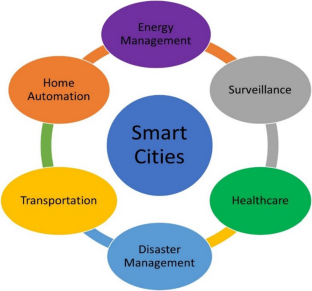

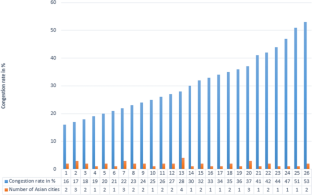
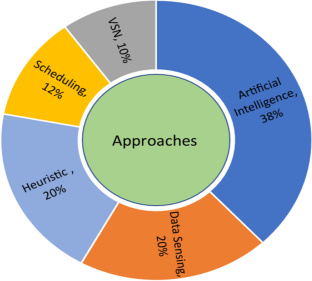
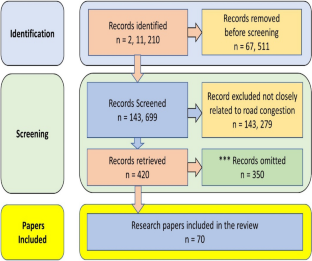
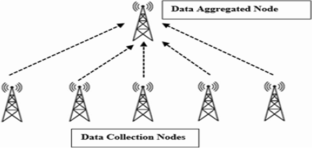
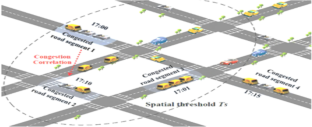


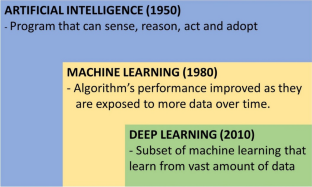
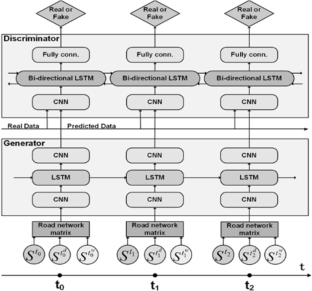
Similar content being viewed by others

A Systematic Literature Review of Studies on Road Congestion Modelling
Chapter © 2020

Contextualizing urban road network hierarchy and its role for sustainable transport futures: A systematic literature review using bibliometric analysis and content analysis tools
Article Open access 18 June 2024

Combating Road Traffic Congestion with Big Data: A Bibliometric Review and Analysis of Scientific Research
Chapter © 2021
Explore related subjects
Data Availability
Code Availability
References
- Thomas, T., Weijermars, W., & Van Berkum, E. (2010). Predictions of urban volumes in single time series. IEEE Transactions on Intelligent Transportation Systems,11(1), 71–80. ArticleGoogle Scholar
- Steve Mazur, B. D. D., Government. An Introduction to Smart Transportation: Benefits and Examples. Dec 09, 2020; [cited 2023 9 July ] Available from: https://www.digi.com/blog/post/introduction-to-smart-transportation-benefits.
- Mazur, S. (2020). An introduction to smart transportation: Benefits and examples.
- Afrin, T., & Yodo, N. (2020). A survey of road traffic congestion measures towards a sustainable and resilient transportation system. Sustainability,12(11), 4660. ArticleGoogle Scholar
- Murray-Tuite, P. (2008). Evaluation of strategies to increase transportation system resilience to congestion caused by incidents. Mid-Atlantic University Transportation Center.
- TOMTOM. (2022). Traffic Index. [cited 2023 10 July ]; Available from: https://www.tomtom.com/en_gb/traffic-ndex/ranking/?country=CN,HK,IN,ID,IL,JP,KW,MY,PH,SA,SG,TW,TH,AE&congestion=WORST
- Page, M. J., The, P. R. I. S. M. A., et al. (2020). statement: An updated guideline for reporting systematic reviews. BMJ,2021, 372. Google Scholar
- Wang, S., et al. (2016). Next road rerouting: A multiagent system for mitigating unexpected urban traffic congestion. IEEE Transactions on Intelligent Transportation Systems,17(10), 2888–2899. ArticleGoogle Scholar
- Hong, W.-C., Dong, Y., Zheng, F., & Lai, C.-Y. (2011). Forecasting urban traffic flow by SVR with continuous ACO. Applied Mathematical Modelling,35(3), 1282–1291. ArticleMathSciNetMATHGoogle Scholar
- Jia, R., et al. (2017). Data driven congestion trends prediction of urban transportation. IEEE Internet of Things Journal,5(2), 581–591. ArticleMathSciNetGoogle Scholar
- Sun, T., et al. (2020). Congestion pattern prediction for a busy traffic zone based on the hidden Markov model. IEEE Access,9, 2390–2400. ArticleGoogle Scholar
- Chen, Z., Jiang, Y., & Sun, D. (2020). Discrimination and prediction of traffic congestion states of urban road network based on spatio-temporal correlation. IEEE Access,8, 3330–3342. ArticleGoogle Scholar
- Priambodo, B., Ahmad, A., & Kadir, R. A. (2021). Predicting traffic flow propagation based on congestion at neighbouring roads using hidden Markov model. IEEE Access,9, 85933–85946. ArticleGoogle Scholar
- Wang, M., & Guo, M. (2013). Traffic state forecasting of typical roads in Beijing. Journal of Transportation Systems Engineering and Information Technology,3(2), 191–198. ArticleGoogle Scholar
- Beojone, C. V., & Geroliminis, N. (2021). On the inefficiency of ride-sourcing services towards urban congestion. Transportation Research Part C: Emerging Technologies,124, 102890. ArticleGoogle Scholar
- Matt Grote, I. W., Preston, J., & Kemp, S. (2016). Including congestion effects in urban road traffic CO2 emissions modelling: Do Local Government Authorities have the right options? Transportation Research Part D: Transport and Environment,43, 95–106. ArticleGoogle Scholar
- Tsitsokas, D., Kouvelas, A., & Geroliminis, N. (2021). Modeling and optimization of dedicated bus lanes space allocation in large networks with dynamic congestion. Transportation Research Part C: Emerging Technologies,127, 103082. ArticleGoogle Scholar
- Li, J., Xu, P., & Li, W. (2021). Urban road congestion patterns under the COVID-19 pandemic: A case study in Shanghai. International Journal of Transportation Science and Technology,10(2), 212–222. ArticleGoogle Scholar
- Du, J., Rakha, H. A., Filali, F., & Eldardiry, H. (2021). COVID-19 pandemic impacts on traffic system delay, fuel consumption and emissions. International Journal of Transportation Science and Technology,10(2), 184–196. ArticleGoogle Scholar
- Mustapha, N. H. N., & Hashim, N. N. W. N. (2016). Outflow of traffic from the national capital Kuala Lumpur to the north, south and east coast highways using flow, speed and density relationships. Journal of Traffic and Transportation Engineering (English Edition),3(6), 540–548. ArticleGoogle Scholar
- Chu, K.-C. et al. (2011). Validation of stochastic traffic flow model with microscopic traffic simulation. In 2011 IEEE International Conference on Automation Science and Engineering. IEEE.
- Nur, K. M., Hasan, M., & Saha, P. C. (2012). An automated urban traffic control system for heavy traffic congestion. In 2012 7th International Conference on Electrical and Computer Engineering. IEEE.
- He, S., & Guan, W. (2012). Investigation on traffic flow competition between main road and on-ramp on urban freeway. In 2012 15th International IEEE Conference on Intelligent Transportation Systems. IEEE.
- Huan, G., Xinping, X., & Jeffrey, F. (2013). Urban road short-term traffic flow forecasting based on the delay and nonlinear grey model. Journal of Transportation Systems Engineering and Information Technology,13(6), 60–66. ArticleGoogle Scholar
- Jo, Y., et al. (2012) Variable speed limit to improve safety near traffic congestion on urban freeways. In 2012 IEEE International Conference on Information Science and Technology. IEEE.
- Wang, Z., et al. (2013). Visual traffic jam analysis based on trajectory data. IEEE transactions on visualization and computer graphics,19(12), 2159–2168. ArticleGoogle Scholar
- Qi, L., Zhou, M., & Luan, W. (2018). A dynamic road incident information delivery strategy to reduce urban traffic congestion. IEEE/CAA Journal of Automatica Sinica,5(5), 934–945. ArticleMathSciNetGoogle Scholar
- Chen, Z., et al. (2018). Discovering urban traffic congestion propagation patterns with taxi trajectory data. IEEE Access,6, 69481–69491. ArticleGoogle Scholar
- Chen, X., et al. (2018). Adaptive rolling smoothing with heterogeneous data for traffic state estimation and prediction. IEEE Transactions on Intelligent Transportation Systems,20(4), 1247–1258. ArticleGoogle Scholar
- Li, C., et al. (2020). Congestion propagation based bottleneck identification in urban road networks. IEEE Transactions on Vehicular Technology,69(5), 4827–4841. ArticleGoogle Scholar
- Yao, Y., Wu, D., Hong, Y., Chen, D., Liang, Z., Guan, Q., Liang, X., & Dai, L. (2020). Analyzing the effects of rainfall on urban traffic-congestion bottlenecks. IEEE Journal of Selected Topics in Applied Earth Observations and Remote Sensing,13, 504–512. ArticleGoogle Scholar
- Balal, E., et al. (2019). Comparative evaluation of measures for urban highway network resilience due to traffic incidents. International journal of transportation science and technology,8(3), 304–317. ArticleGoogle Scholar
- Yang, Q., et al. (2019). Real-time detection of traffic congestion based on trajectory data. The Journal of Engineering,2019(11), 8251–8256. ArticleGoogle Scholar
- Ma, W., Wan, L., Yu, C., Zou, L., & Zheng, J. (2020). Multi-objective optimization of traffic signals based on vehicle trajectory data at isolated intersections. Transportation Research Part C: Emerging Technologies,120, 102821. ArticleGoogle Scholar
- Song, C., & Wu, J. (2019). Vehicular Ad Hoc/Sensor Networks in Smart Cities (Vol. 164). Springer. Google Scholar
- Kumar, N., Misra, S., & Obaidat, M. S. (2014). Collaborative learning automata-based routing for rescue operations in dense urban regions using vehicular sensor networks. IEEE Systems Journal,9(3), 1081–1090. ArticleGoogle Scholar
- Dragoi, V.-A., & Dobre, C. (2011). A model for traffic control in urban environments. In 2011 7th International Wireless Communications and Mobile Computing Conference. IEEE.
- Skordylis, A., & Trigoni, N. (2011). Efficient data propagation in traffic-monitoring vehicular networks. IEEE Transactions on Intelligent Transportation Systems,12(3), 680–694. ArticleGoogle Scholar
- Knorr, F., et al. (2012). Reducing traffic jams via VANETs. IEEE Transactions on Vehicular Technology,61(8), 3490–3498. ArticleGoogle Scholar
- Du, R., et al. (2014). Effective urban traffic monitoring by vehicular sensor networks. IEEE transactions on Vehicular Technology,64(1), 273–286. ArticleGoogle Scholar
- Eren, H., et al. (2013) Instrumentation for safe vehicular flow in intelligent traffic control systems using wireless networks. In 2013 IEEE International Instrumentation and Measurement Technology Conference (I2MTC). IEEE.
- Liu, H., et al. (2021). A two-step abnormal data analysis and processing method for millimetre-wave radar in traffic flow detection applications. IET Intelligent Transport Systems,15(5), 671–682. ArticleGoogle Scholar
- Liu, H., et al. (2018). Data feature analysis of non-scanning multi target millimeter-wave radar in traffic flow detection applications. Sensors,18(9), 2756. ArticleGoogle Scholar
- Ahmad, A., et al. (2014). Earliest-deadline-based scheduling to reduce urban traffic congestion. IEEE Transactions on Intelligent Transportation Systems,15(4), 1510–1526. ArticleGoogle Scholar
- Xu, Y., et al. (2012) Efficient detection scheme for urban traffic congestion using buses. In 2012 26th International Conference on Advanced Information Networking and Applications Workshops. IEEE.
- Park, C., & Lee, J. (2011). Intelligent traffic control based on IEEE 802.11 DCF/PCF mechanisms at intersections. In 2011 IEEE Vehicular Technology Conference (VTC Fall). IEEE.
- Yan, S., Chen, C.-Y., & Chang, S.-C. (2013). A car pooling model and solution method with stochastic vehicle travel times. IEEE transactions on intelligent transportation systems,15(1), 47–61. ArticleMathSciNetGoogle Scholar
- Ahmad, F., Mahmud, S. A., & Yousaf, F. Z. (2016). Shortest processing time scheduling to reduce traffic congestion in dense urban areas. IEEE Transactions on Systems, Man, and Cybernetics: Systems,47(5), 838–855. ArticleGoogle Scholar
- Overtoom, I., et al. (2020). Assessing the impacts of shared autonomous vehicles on congestion and curb use: A traffic simulation study in The Hague, Netherlands. International journal of transportation science and technology,9(3), 195–206. ArticleGoogle Scholar
- Anbaroglu, B., Heydecker, B., & Cheng, T. (2014). Spatio-temporal clustering for non-recurrent traffic congestion detection on urban road networks. Transportation Research Part C: Emerging Technologies,48, 47–65. ArticleGoogle Scholar
- Amer, H. M., et al. (2021). Hybrid game approach-based channel congestion control for the Internet of Vehicles. IET Wireless Sensor Systems,11(1), 32–44. ArticleGoogle Scholar
- Infographic: Get Started with AI Development Today. (2017). Available from: https://software.intel.com/content/www/us/en/develop/articles/infographic-get-started-with-ai-development-today.html
- Zhang, X., & Hu, P. (2011). An intelligent-based prediction system for incident-induced congestion spreading. In Proceedings 2011 International Conference on Transportation, Mechanical, and Electrical Engineering, TMEE.
- Wei, L., & Li, M. (2012). A fuzzy fusion algorithm to identify the traffic states by the floating car data. In 9th International Conference on Fuzzy Systems and Knowledge Discovery. IEEE.
- Li, Y., et al. (2013). Vehicle detection based on the and–or graph for congested traffic conditions. IEEE Transactions on Intelligent Transportation Systems,14(2), 984–993. ArticleGoogle Scholar
- El-Tantawy, S., Abdulhai, B., & Abdelgawad, H. (2013). Multiagent reinforcement learning for integrated network of adaptive traffic signal controllers (MARLIN-ATSC): Methodology and large-scale application on downtown Toronto. IEEE Transactions on Intelligent Transportation Systems,14(3), 1140–1150. ArticleGoogle Scholar
- Kim, Y.-J., & Hong, J.-S. (2015). Urban traffic flow prediction system using a multifactor pattern recognition model. IEEE Transactions on Intelligent Transportation Systems,16(5), 2744–2755. ArticleGoogle Scholar
- Kim, G., et al. (2016). Solving the dynamic vehicle routing problem under traffic congestion. IEEE Transactions on Intelligent Transportation Systems,17(8), 2367–2380. ArticleGoogle Scholar
- Al Mallah, R., Quintero, A., & Farooq, B. (2017). Distributed classification of urban congestion using VANET. IEEE Transactions on Intelligent Transportation Systems,18(9), 2435–2442. ArticleGoogle Scholar
- El-Sayed, H., & Thandavarayan, G. (2017). Congestion detection and propagation in urban areas using histogram models. IEEE Internet of Things Journal,5(5), 3672–3682. ArticleGoogle Scholar
- Chen, M., Yu, X., & Liu, Y. (2018). PCNN: Deep convolutional networks for short-term traffic congestion prediction. IEEE Transactions on Intelligent Transportation Systems,19(11), 1–10. ArticleGoogle Scholar
- Lee, C., et al. (2019). A visual analytics system for exploring, monitoring, and forecasting road traffic congestion. IEEE transactions on visualization and computer graphics,26(11), 3133–3146. ArticleGoogle Scholar
- Huang, M., & Zheng, J. (2020). Traffic flow forecast through time series analysis based on deep learning. IEEE Access,8, 82562–82570. ArticleGoogle Scholar
- Wang, C., Zhang, J., Xu, L., Li, L., & Ran, B. (2019). A new solution for freeway congestion: Cooperative speed limit control using distributed reinforcement learning. IEEE Access,7, 41947–41957. ArticleGoogle Scholar
- Zheng, Z., Yang, Y., Liu, J., Dai, H.-N., & Zhang, Y. (2019). Deep and embedded learning approach for traffic flow prediction in urban informatics. IEEE Transactions on Intelligent Transportation Systems,20(10), 3927–3939. ArticleGoogle Scholar
- Feng, X., Ling, X., Zheng, H., Chen, Z., & Xu, Y. (2018). Adaptive multi-kernel SVM with spatial-temporal correlation for short-term traffic flow prediction. IEEE Transactions on Intelligent Transportation Systems,20(6), 1–13. Google Scholar
- Zhao, W., Gao, Y., Ji, T., Wan, X., Ye, F., & Bai, G. (2019). Deep temporal convolutional networks for short-term traffic flow forecasting. IEEE Access,7, 114496–114507. ArticleGoogle Scholar
- Ranjan, N., Bhandari, S., Zhao, H. P., Kim, H., & Khan, P. (2020). City-wide traffic congestion prediction based on CNN, LSTM and transpose CNN. IEEE Access,8, 81606–81620. ArticleGoogle Scholar
- Xu, C., Zhang, A., & Chen, Y. (2020). Traffic congestion forecasting in Shanghai based on multi-period hotspot clustering. IEEE Access,8, 63255–63269. ArticleGoogle Scholar
- Masud, U., Jeribi, F., Alhameed, M., Tahir, A., Javaid, Q., & Akram, F. (2020). Traffic congestion avoidance system using foreground estimation and cascade classifier. IEEE Access,8, 178859–178869. ArticleGoogle Scholar
- Pi, M., Yeon, H., Son, H., & Jang, Y. (2021). Visual cause analytics for traffic congestion. IEEE Transactions on Visualization and Computer Graphics,27(3), 2186–2201. ArticleGoogle Scholar
- Abdi, J., Moshiri, B., Abdulhai, B., & Sedigh, A. K. (2012). Forecasting of short-term traffic-flow based on improved neurofuzzy models via emotional temporal difference learning algorithm. Engineering Applications of Artificial Intelligence,5, 1022–1042. ArticleGoogle Scholar
- Rong, Y. U., Guoxiang, W., Zheng, J., & Wang, H. (2013). Urban road traffic condition pattern recognition based on support vector machine. Journal of Transportation Systems Engineering and Information Technology,3(1), 130–136. Google Scholar
- Wu, Y., Yu, D., Yu, W., Qin, T., & Li, Y. (2014). Double-layer ramp-metering model for incident congestion on expressway. Journal of Traffic and Transportation Engineering (English Edition),1(2), 129–137. ArticleGoogle Scholar
- Zhang, F., Li, J., Chen, J., Sun, J., & Attey, A. (2017). Hesitant distance set on hesitant fuzzy sets and its application in urban road traffic state identification. Engineering Applications of Artificial Intelligence,61, 57–64. ArticleGoogle Scholar
- Zhang, Y., Wang, S., Chen, B., Cao, J., & Huang, Z. (2021). TrafficGAN: Network-scale deep traffic prediction with generative adversarial nets. IEEE Transactions on Intelligent Transportation Systems,22(1), 219–230. ArticleGoogle Scholar
- Zhang, Z., & Jiao, X. (2021). A deep network with analogous self-attention for short-term traffic flow prediction. IET Intelligent Transport Systems,15(7), 902–915. ArticleGoogle Scholar
- Yuan, W., et al. (2021). An alternative reliability method to evaluate the regional traffic congestion from GPS data obtained from floating cars. IET Smart Cities,3(2), 79–90. ArticleGoogle Scholar
- Tian, C., & Chan, W. K. (2021). Spatial-temporal attention wavenet: A deep learning framework for traffic prediction considering spatial-temporal dependencies. IET Intelligent Transport Systems,15(4), 549–561. ArticleGoogle Scholar
- Jilani, U., Asif, M., Rashid, M., Siddique, A. A., & Talha, S. M. U. (2022). Traffic congestion classification using GAN-based synthetic data augmentation and a novel 5-layer convolutional neural network mode. Electronics,11(15), 2290. ArticleGoogle Scholar
- Saleem, M., Abbas, S., Ghazal, T. M., Khan, M. A., Sahawneh, N., & Ahmad, M. (2022). Smart cities: Fusion-based intelligent traffic congestion control system for vehicular networks using machine learning techniques. Egyptian Informatics Journal,23(3), 417–426. ArticleGoogle Scholar
- Yuan, W., Wang, P., Yang, J., & Meng, Y. (2021). An alternative reliability method to evaluate the regional traffic congestion from GPS data obtained from floating cars. IET Smart Cities,3(2), 79–90. ArticleGoogle Scholar
- TOMTOM. (2020). Tracking the impact of COVID-19 through traffic. [cited 2023 10 July]; Available from: https://www.tomtom.com/en_gb/traffic-index/
Acknowledgements
The authors would like to thanks Data Acquisition, Processing and Predictive Analytics (DAPPA) Lab, National Centre in Big Data and Cloud Computing, Ziauddin University, Karachi, Pakistan.
Funding
Author information
Authors and Affiliations
- Department of Electrical Engineering, Ziauddin University, Karachi, Pakistan Umair Jilani, Muhammad Asif, Muhammad Yousuf Irfan Zia & Munaf Rashid
- Department of Telecommunication Engineering, Sir Syed University of Engineering and Technology, Karachi, Pakistan Umair Jilani
- Faculty of Computing and Applied Sciences, Sir Syed University of Engineering and Technology, Karachi, Pakistan Muhammad Asif
- Department of Communications Engineering, University of Malaga, Malaga, Spain Muhammad Yousuf Irfan Zia & Pablo Otero
- IBET, Liaquat University of Medical and Health Science, Jamshoro, Pakistan Sarmad Shams
- Umair Jilani













